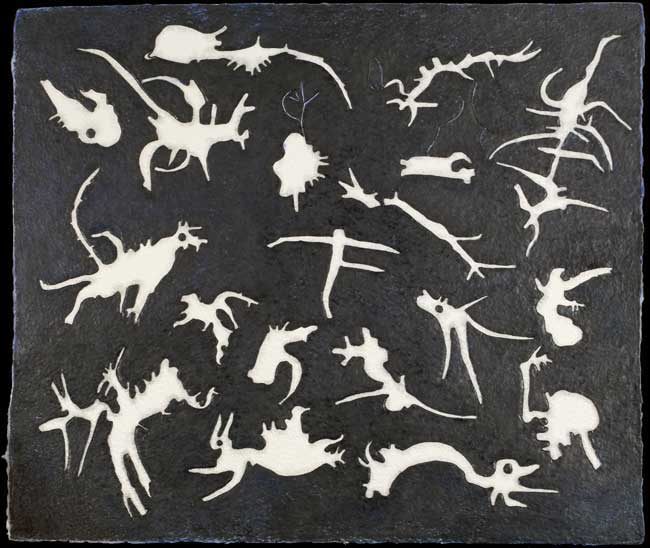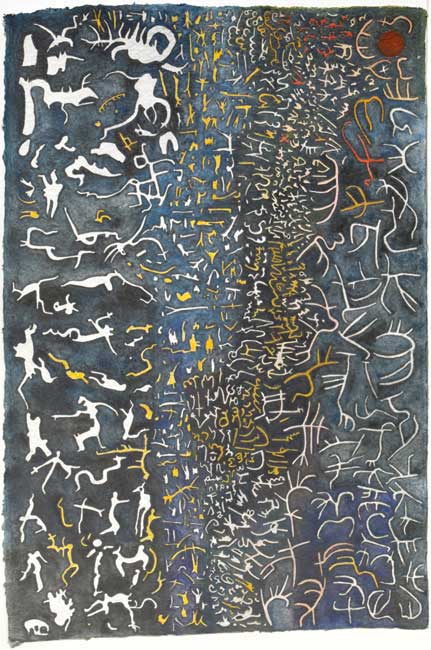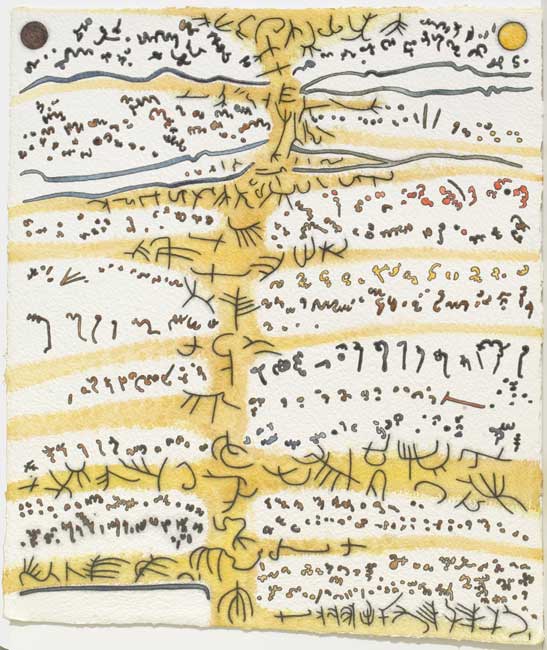6 - 25 May 2010
about the exhibition
The work of GW Bot sees an individual’s path through personal and public environments as an allegory for a passage through life. For the artist, her glyphs are signs and symbols of natural elements that communicate her bond with the Australian landscape, forming a unique language for Bot to employ intuitively. This extensive repertoire of glyph motifs features across both her works on paper and sculptures. In a most basic observation, they are evocative of branches and twigs, and have also been likened to the moth tracks on scribbly gums. Yet her glyphs operate via the links of allusion and association to form abstract landscapes, or more elusively, a map of almost cosmological markings, mapping out the progression of time, seasons or natural events. Common elements include exploring the primal opposites of day and night; fire and water; light and dark; life and death. When observed within this spiritual framework, the arrangement of glyphs becomes an ancient language of the land, encouraging interpretation on an intuitive level. GW Bot’s use of a natural colour palette, strong silhouettes and an emphasis on coarse visual and tactile textures further depict her ‘oneness’ with the land. An increasingly important theme in her work is the celebration and preservation of “… the sacredness of life and the beauty of all creation”.
GW Bot draws her exhibiting name from a French document citing the earliest written reference to a wombat or ‘le grand Wam Bot’. Her decision to adopt this reference to the wombat as her namesake stems from her appreciation of Aboriginal totemic belief, where each member of a clan inherits a totemic relationship with a particular plant or animal of the region. GW Bot’s bond with the environment thus exists on both a spiritual and physical plane. GW Bot studied art in London, Paris and Australia, graduating from the Australian National University in 1982. She has been exhibiting full-time as a printmaker, painter and sculptor since 1985. GW Bot exhibits widely in solo and group shows across Australia and internationally including London, Paris, Poland, Japan and Manila. Her work is represented in many public collections, including the National Gallery of Australia, Albertina (Vienna), British Museum, British Library, Victoria and Albert Museum, Bibliotheque Nationale (Paris), Fogg Museum of Fine Arts (Harvard University, USA), Kharkiv Art Gallery (Ukraine) and Lublin Museum (Poland).































